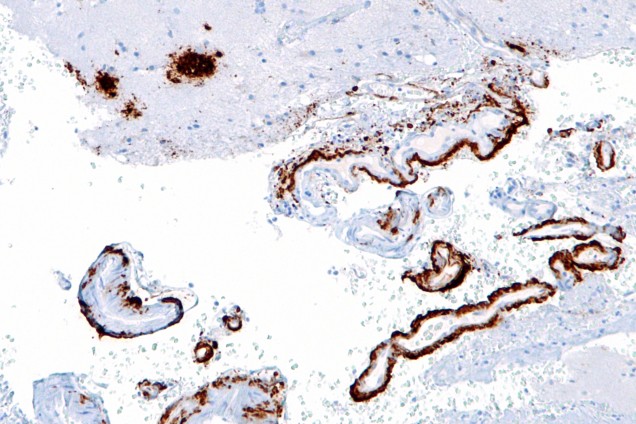Toxicity of Amyloid Bundles and Why Size Matters
Amyloid Beta Plaques are bundles of protein that accumulate at certain locations within the body, commonly leading to Alzheimer’s Disease, and sometimes other diseases. As a result, scientists are trying to study Amyloid Beta proteins to understand the disease, and any other neurodegenerative diseases related to Alzheimer’s Disease. As for whether the protein itself is toxic or not, that depends on the shape of the Amyloid beta. Amyloid beta (ABeta) only becomes toxic when it forms small bundles, and it become less toxic as they form larger fibrillar structures. The effects of shape on toxicity were discovered by the Tata Institute of Fundamental Research in India, where scientists used nuclear magnetic resonance (NMR) and froze the samples of ABeta to determine the structure during the different times of evolution. They also found that the toxicity begins to occur due to a transition from intramolecular to intermolecular beta sheets, which makes them less toxic. Discovering how to manipulate the toxic form may ultimately lead to the reduction in the toxicity of certain drugs and also a greater understanding of the molecular basis of man diseases.
Another way to reduce plaque formation is with a new candidate for a drug – a molecule in snake venom that is able to activate the enzymes that break down the plaques in the brain. It was recently discovered by Dr. Sanjaya Kuruppu and Professor Ian Smith from Monash University’s Biomedicine Discovery Institute that this one molecule was able to enhance the enzymes’ ability to break down plaque in the venom of a pit viper from South America. As more discoveries are being made about amyloid beta plaques, we get closer to unraveling its molecular mystery, and hopefully soon we will be able to reduce the harmful side effects of certain drugs or even prevent neurodegenerative diseases such as Alzheimer’s and Parkinson’s from occurring at all.
~Albert Wang
Sources:
The Evolution of Amyloid Toxicity in Alzheimer’s
Snake Venom May Hold Key to Breaking Down Alzheimer’s Plaques
Platform: Intrinsically Disordered Proteins (IDP) and Aggregates II
Image Source:
